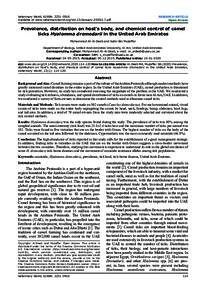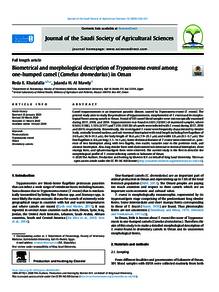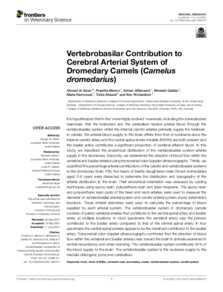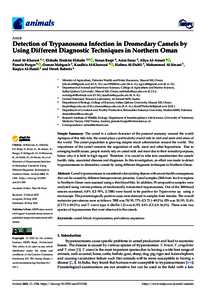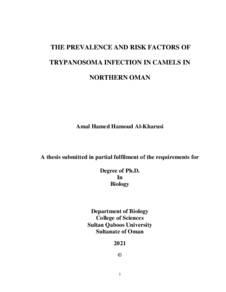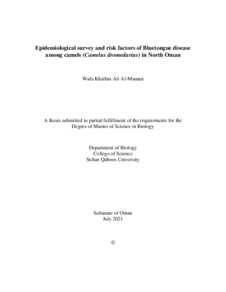وثيقة
Prevalence, distribution on host's body, and chemical control of camel ticks hyalomma dromedarii in the United Arab Emirates.
المعرف
DOI: 10.14202/vetworld.2020.114-120
المصدر
Veterinary World. v. 13, 1, p. 114-120
المساهمون
Bin Muzaffar, Sabir., مؤلف
الدولة
South Africa.
الناشر
Veterinary World.
ميلادي
2020-01-01
اللغة
الأنجليزية
الملخص الإنجليزي
Background and Aim: Camel farming remains a part of the culture of the Arabian Peninsula although modern methods have greatly increased camel densities in the entire region. In the United Arab Emirates (UAE), camel production is threatened by tick parasitism. However, no study has considered assessing the magnitude of the problem in the UAE. We conducted a study evaluating tick richness, abundance, and spatial distribution of ticks on camels in farms near Al Ain, UAE. In addition, we conducted a survey of farm owners to determine the control methods used to eliminate camel ticks. Materials and Methods: Tick counts were made on 502 camels (Camelus dromedarius). For each examined animal, visual counts of ticks were made on the entire body segregating the counts by head, neck, forelegs, hump, abdomen, back legs, and tail area. In addition, a total of 70 camel owners from the study area were randomly selected and surveyed about the tick control methods. Results: Hyalomma dromedarii was the only species found during the study. The prevalence of ticks was 98% among the sampled animals. The mean intensity (tick load) was 25.8±2.4 ticks/host and the maximum number of ticks per animal was 102. Ticks were found in five vicinities that are on the border with Oman. The highest number of ticks on the body of the camel occurred on the tail area followed by the abdomen. Cypermethrin was the most commonly used acaricide (46.9%). Conclusion: The high abundance of ticks reported in this study calls for the establishment of a good management strategy. In addition, finding ticks in vicinities in the UAE that are on the border with Oman suggests a cross-border movement between the two countries. Therefore, studying this movement is important to understand its role in the global circulation of some H. dromedarii tick-borne diseases and the movement of acaricide resistance alleles among tick populations. Copyright: Al-Deeb and Muzaffar.
ISSN
0972-8988
URL المصدر
قالب العنصر
مقالات الدوريات

